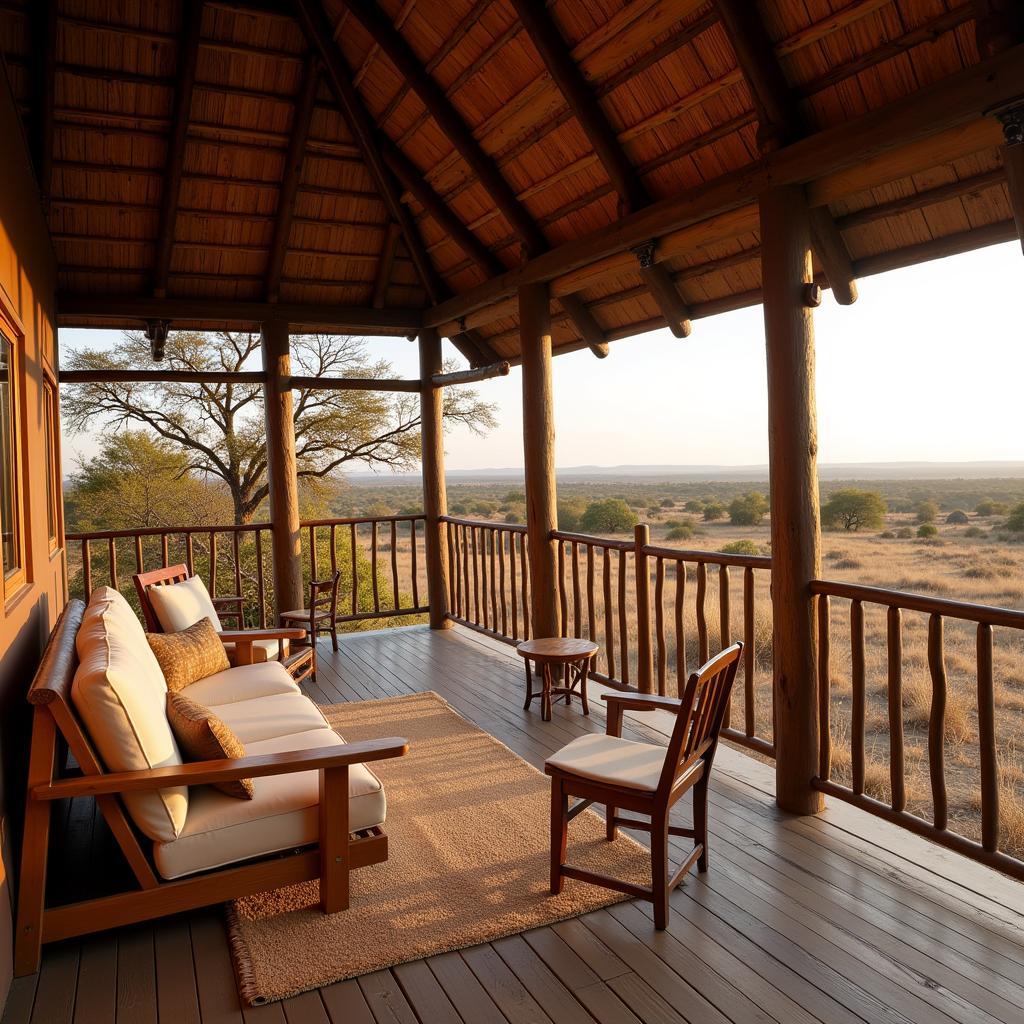Exploring Authentic African Farmhouse Designs
African Farmhouse Designs are experiencing a surge in popularity, blending rustic charm with the continent’s rich cultural heritage. This architectural style offers a unique opportunity to create a living space that is both aesthetically pleasing and deeply connected to the spirit of Africa. From incorporating local materials and craftsmanship to embracing open-plan layouts that maximize natural light and ventilation, African farmhouse design offers a diverse range of possibilities.
The Essence of African Farmhouse Style
African farmhouse architecture draws inspiration from traditional building techniques and local materials, resulting in homes that are both functional and beautiful. Key elements include the use of natural stone, timber, and thatch, creating a warm and inviting atmosphere. The focus is on simplicity and practicality, with an emphasis on connecting indoor and outdoor living spaces. Think expansive verandas overlooking breathtaking landscapes, and open-plan interiors that flow seamlessly into courtyards and gardens.
The beauty of African farmhouse design lies in its ability to adapt to diverse climates and landscapes, from the savannahs of East Africa to the coastal regions of West Africa. Whether you envision a sprawling ranch-style home or a cozy cottage nestled amidst lush vegetation, there’s an African farmhouse design to suit every taste and lifestyle.
Key Elements of African Farmhouse Designs
Several key elements define the African farmhouse aesthetic. Natural materials are paramount, with locally sourced stone, wood, and thatch often used in construction. Color palettes tend to be earthy and neutral, reflecting the surrounding landscape. Large windows and open-plan layouts maximize natural light and ventilation, creating a connection with the outdoors. Incorporating local textiles, handcrafted furniture, and tribal art adds a touch of authentic African flair.
Incorporating Local Materials and Craftsmanship
Using local materials not only reduces the environmental footprint but also supports local communities and artisans. Think hand-carved wooden doors, woven baskets, and intricately patterned fabrics. These elements add character and authenticity to the home, creating a truly unique space.
“Authenticity is key,” says renowned architect Adisa Babatunde from Lagos, Nigeria. “African farmhouse design should celebrate the continent’s diverse cultures and traditions, not simply imitate them.”
Designing for Different Climates and Landscapes
African farmhouse design is incredibly versatile, adapting seamlessly to different climates and landscapes. In arid regions, thick walls and small windows help to keep the interior cool. In more temperate climates, large windows and verandas maximize airflow and natural light. The design should always be sensitive to the surrounding environment, minimizing its impact while maximizing its connection to nature.
Creating Indoor-Outdoor Living Spaces
One of the hallmarks of African farmhouse design is the seamless integration of indoor and outdoor living spaces. Expansive verandas, courtyards, and outdoor dining areas provide ample opportunities to enjoy the surrounding landscape. These spaces can be furnished with comfortable seating, creating relaxing retreats for entertaining and relaxation.
“The connection to nature is paramount,” explains interior designer Khadija Mbogo from Nairobi, Kenya. “African farmhouse design should blur the lines between indoor and outdoor living, creating a harmonious and inviting space.”
 Expansive Veranda Overlooking the African Savannah
Expansive Veranda Overlooking the African Savannah
Modern Interpretations of African Farmhouse Design
While traditional African farmhouse design remains popular, modern interpretations are emerging. These incorporate contemporary elements such as sleek lines, minimalist aesthetics, and sustainable technologies. The result is a fusion of old and new, creating homes that are both stylish and functional.
Blending Traditional and Contemporary Elements
Modern African farmhouse designs often blend traditional materials with contemporary finishes. Think exposed brick walls paired with polished concrete floors, or thatched roofs combined with sleek metal accents. This creates a dynamic and visually appealing contrast, while still retaining the essence of African farmhouse style.
Conclusion
African farmhouse designs offer a unique opportunity to create a living space that is both beautiful and deeply connected to the African landscape and its rich cultural heritage. By incorporating local materials, craftsmanship, and design principles, you can create a home that is not only aesthetically pleasing but also sustainable and authentic. Embrace the spirit of Africa and create a home that truly reflects your personal style and connection to this vibrant continent.
FAQ
- What are the key characteristics of African farmhouse design?
- How can I incorporate local materials into my African farmhouse design?
- What are some modern interpretations of African farmhouse style?
- How can I design an African farmhouse that is suitable for my climate?
- Where can I find inspiration for African farmhouse designs?
- What are the benefits of using natural materials in construction?
- How can I create a seamless indoor-outdoor living space?
Need help with your African Farmhouse design? Contact us! Phone: +255768904061, Email: [email protected] Or visit us at: Mbarali DC Mawindi, Kangaga, Tanzania. We have a 24/7 customer service team.

